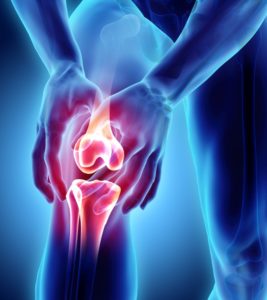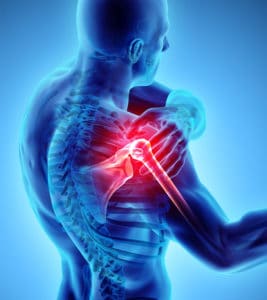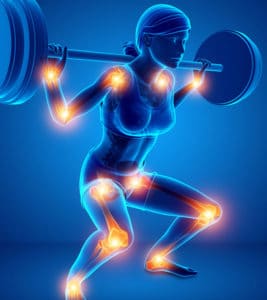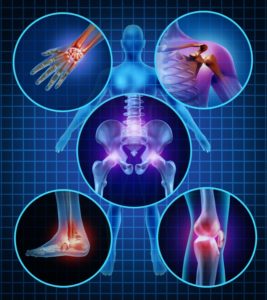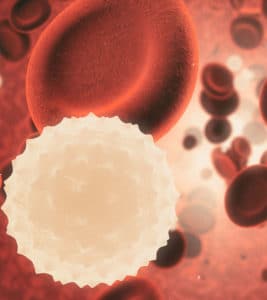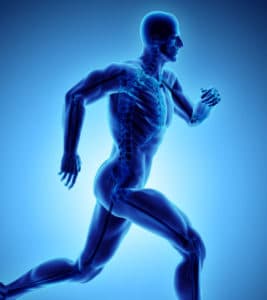Tendon Tear- Quadriceps, Patella, Hamstring Tear
Quadriceps Tendon Tear
The quadriceps tendon attaches the quadricep muscles to the patella bone in the lower, front part of the thigh, just above the knee. These muscles, tendons and bones work together to help straighten the knee. A quadriceps tear is a serious injury that can cause loss of knee function. The quadriceps tendon may become inflamed and eventually tear from athletic activity that strains the tendons, such as running, bicycling and dancing. Jumping activities, such as playing basketball, may put an athlete at a higher risk of a quadriceps tear, as landing puts immense strain on the quadriceps tendon. Quadriceps tendon tears can also be caused by falls or direct force to the front of the knee. Although a quadriceps tendon tear may occur at any age, it is more common in middle-aged individuals who are physically active.
A quadriceps tendon tear may be considered partial or complete. A partial tear has not completely disrupted the tissue of the quadriceps tendon and it may be stretched, but still in one piece. A complete tear results in tissue that has split into two pieces and the muscle is no longer attached to the knee cap. Treatment for a quadriceps tendon tear may vary based on the type of tear that has occurred.
Symptoms Of A Quadriceps Tendon Tear
When the quadriceps tendon tears, there is sometimes a tearing or popping sensation within the thigh. Additional symptoms of a quadriceps tear may include:
- Pain
- Swelling
- Tenderness
- Bruising
- Indentation in the knee cap
In most cases, individuals are also unable to straighten the knee and have difficulty walking as the knee may buckle or give out.
Diagnosis Of A Quadriceps Tendon Tear
A quadriceps tendon tear is diagnosed through a physical examination and the doctor may also test whether the individual can extend or straighten the knee. X-rays and MRI scans are performed to determine the severity of the tear and the exact location of the injury.
Treatment Of A Quadriceps Tendon Tear
Treatment for a quadriceps tendon tear depends on the severity of the tear, the age of the patient and the activity level of his or her lifestyle. Mild tears may respond to immobilization through the use of a knee immobilizer or brace. Physical therapy can also help to restore strength and range of motion. Complete and more severe tears often require surgery to repair the torn tendon. Surgeons may use a wire, sutures, or cables to stitch the tendons back together and to help hold the kneecap in position while the tendon heals. Physical therapy is also important after surgery to help the patient regain flexibility and full mobility of the knee.
Hamstring Injury
An injury to the hamstring muscle is a painful problem, frequent among athletes, especially those who sprint, or run and stop suddenly. The hamstring is not a single muscle, but three muscles located at the back of the thigh. A hamstring injury may involve a strain, which is a stretching or partial tearing of the muscle, or an avulsion injury, which is a complete tear of the muscle, pulling it away from the bone. Because hamstring injuries are usually the result of one of the muscles being stretched beyond capacity, such injuries are commonly referred to as “pulled hamstrings.”
Risk Factors For A Hamstring Injury
While a hamstring injury can happen to anyone, individuals are at greater risk of suffering such an injury if they:
- Participate in running, soccer, tennis, football, basketball or dance
- Have had a previous hamstring injury
- Are not flexible or have not stretched prior to exercise
- Have a muscle imbalance between the quadriceps and hamstrings
- Are adolescents in the midst of a growth spurt
Symptoms Of A Hamstring Injury
Patients with a hamstring injury may experience any of all of the following symptoms, depending on the severity of the tear:
- Sudden pain during exercise
- Snapping or popping sensation
- Pain in back of thigh or lower buttock
- Tenderness and bruising at the site
- Weakness in the hip or knee
- Tingling sensation at the back of the thigh
Since the hamstring muscles make it possible to extend the leg straight behind the body and to bend the knee, pain during these movements may be a sign of a hamstring injury.
Diagnosis Of A Hamstring Injury
To determine whether the hamstring has been injured and to what extent, the doctor will take a medical history and perform a physical examination of the area. With the patient lying face down, the doctor will look for any sign of tenderness, bruising or muscle spasm on the back of the thigh and will move the leg into different positions to try to pinpoint the region of the damage. If the patient has difficulty putting weight on the affected limb, further diagnostic testing will likely be required, first X-rays to rule out any possible fracture, and then an MRI scan or ultrasound to view the hamstring tear itself.
Hamstring Injury Treatment
Treatment for a hamstring injury depends on the severity of the damage, but many cases will heal with minimal care. Patients can relieve symptoms and facilitate the healing process through home remedies such as resting, applying ice and taking anti-inflammatory medications to diminish pain and swelling. Physical therapy is also typically very beneficial, as it works to gently stretch and strengthen the hamstring muscle. As the symptoms improve, gradually increasing exercise may prevent a recurrence of the injury. Generally, most patients can resume normal activities and sports participation in 4 to 6 weeks when the symptoms are gone.
If these conservative measures are not effective for a partial tear, an injection of either corticosteroids or platelet rich plasma may be recommended. These treatments can provide significant relief from pain and assist in the healing of damaged tissue. Severe hamstring injuries may require surgery to repair the torn muscle, especially in athletic patients, who may otherwise experience weakened muscles or other limitations in their ability to fully engage in the sports of their choice.
Achilles Tendon Rupture
The Achilles tendon is the strong band of tissue that connects the calf muscle to the heel. If stretched too far, the tendon can tear, or rupture, causing severe pain in the ankle and lower leg that can make it difficult or even impossible to walk. An Achilles tendon rupture, which may be partial or complete, often occurs as a result of repeated stress on the tendon while playing sports such as soccer or basketball. Although frequently resulting from the same stresses that cause Achilles tendonitis, a rupture of the Achilles tendon is a far more serious injury, usually requiring surgical repair.
Risk Factors For Achilles Tendon Rupture
An Achilles tendon may rupture if it has been previously over-stretched or weakened by:
- Poor stretching habits prior to exercise
- Tight or weak calf muscles
- Wearing shoes that do not fit properly
- Engaging in physical activity after a long break
- Taking certain types of antibiotics, such as Cipro or Levaquin
- Having steroid injections into the ankle joint
- Running on difficult terrain or in extremely cold weather
Being a man, being obese, having flat feet or having diabetes or hypertension increase the risk for an Achilles tendon rupture.
Symptoms Of Achilles Tendon Rupture
Achilles tendon ruptures are usually caused by traumatic injury, frequently accompanied by a popping or snapping sound as the tendon tears. Patients usually experience severe pain and swelling near the heel of the foot and are unable to walk normally or bend their foot. Because these symptoms are similar to those of other conditions, such as bursitis and tendonitis, it is important to seek prompt medical attention in order to determine the correct diagnosis.
Treatment Of Achilles Tendon Rupture
Treatment for an Achilles tendon rupture depends on the severity of the condition, but most often requires surgery to repair the tendon and restore function to the foot. Less severe cases may only require a cast or walking boot for several weeks, although the risk of a recurring rupture is higher with this treatment than with surgical repair. When surgery is necessary, the tendon is reattached and sometimes reinforced with other tendon tissue. Physical rehabilitation for several months is usually necessary after an Achilles tendon rupture, whether or not an operation is performed.







